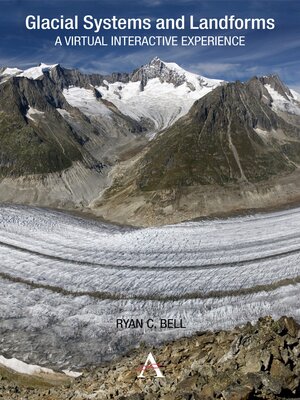Glacial Systems and Landforms
ebook ∣ A Virtual Interactive Experience · Anthem Learning Geography
By Ryan C. Bell

Sign up to save your library
With an OverDrive account, you can save your favorite libraries for at-a-glance information about availability. Find out more about OverDrive accounts.
Find this title in Libby, the library reading app by OverDrive.



Search for a digital library with this title
Title found at these libraries:
| Library Name | Distance |
|---|---|
| Loading... |
This interactive guide serves to make glacial systems and landforms more accessible, as students use Google Earth and other satellite imagery to understand the patterns and processes found within glacial environments. Guided inquiry activities range from calculating the Mendenhall Glacier's rate of melting to identifying erosional landforms in the Swiss Alps. In this way, the guide offers a virtual interactive experience in which students can visit and explore glacial systems and landforms in 3D. Through studying these images the student will not only start to recognize the forms commonly found within glacial landscapes, but also develop skills in map analysis and interpretation.
|Using Google Earth, this guide offers a virtual interactive experience in which students can visit and explore glacier environments in 3D. Ryan C. Bell demonstrates how the explosion of satellite imagery and remote sensing technologies has further helped reveal the hidden truths of glacial environments by providing new methods of mapping and measuring glacial ice.
Taking advantage of the recent proliferation in high-resolution satellite imagery, this guide includes a series of satellite images from NASA's Earth Observatory. By studying these images students will not only start to recognize the patterns and processes commonly found within glacial landscapes, but will also develop skills in map analysis and interpretation. Such guided inquiry activities range from calculating the Mendenhall Glacier's rate of melting to identifying erosional landforms in the Swiss Alps.
Included within this book is a guided final project in which students have the opportunity to develop and present a Google Earth tour of various glacial landforms, allowing them to "fly" from one location to the next. The volume also reveals how past and present glaciations profoundly influence almost every aspect of life on Earth and can provide answers and solutions to current climate problems.







